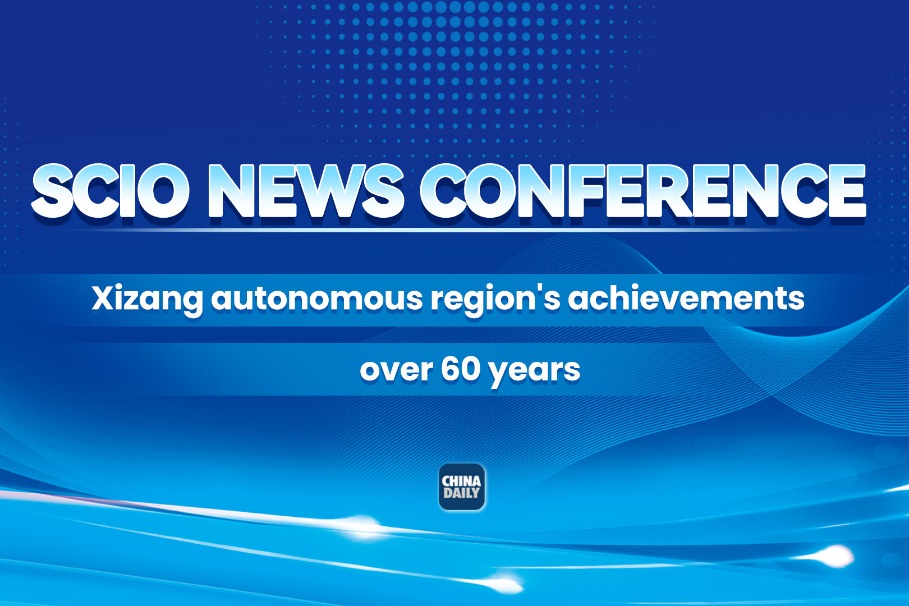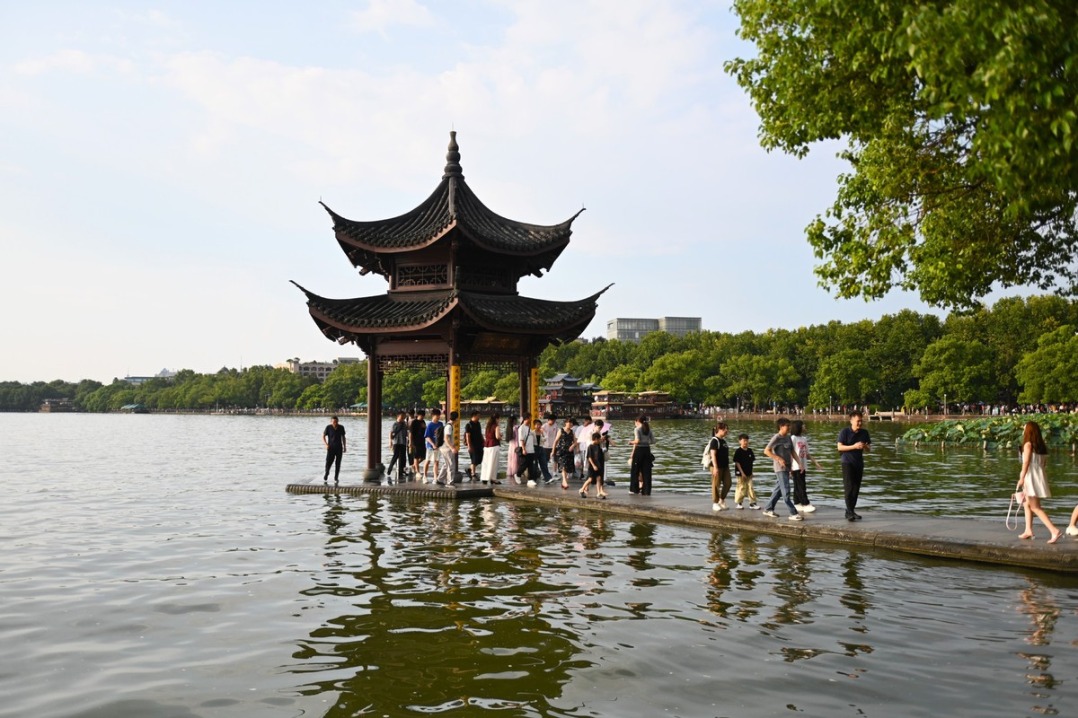Shanghai key to basic research lead
City's policies, investment help country maintain global edge in science


Academic freedom
Since 2014, when Shanghai began to build itself into an international science and technology innovation center, the city's total investment in basic research has grown by 13.8 percent every year.
Last year alone, the proportion of the city's investment in research and development reached about 11 percent, higher than the national level of 6.91 percent.
This year's Shanghai Government Work Report proposed speeding up the construction of basic research pilot zones, strengthening organized scientific research, and continuing support for high-risk, high-value research.
Shanghai's adherence to large-scale, long-term investment to support scientists conducting high-risk, high-value, and long-cycle research is beginning to pay off, experts said.
Outstanding young scientists in Shanghai are aiming to make breakthroughs and provide solutions to academic challenges and benefit the world.
"A large number of outstanding talented people, especially the young and middle-aged who are at the peak of their creativity, have returned to China in the past decade," said Jin Shi, dean of the Institute of Natural Sciences at SJTU.
"Their return represents the future, and is an important sign of the vitality of Chinese science," he said.
The main factors behind the influx of talent include the government's unrelenting support for scientific research, and the increasing internationalization of local universities, with a growing emphasis on scientific research.
Providing researchers with a good working environment and allowing them to explore freely are decisive factors in achieving real scientific breakthroughs, experts said.
Jin said Isaac Newton's discovery of the law of universal gravitation was not the result of a "boss" instructing the English physicist to discover the theory in three months.
The dean cited the difference between scientific research and engineering to further illustrate this point.
"When it comes to engineering, I can specify that the workers must build this building within three months. However, scientific research is spontaneous, with no one being able to dictate how it should be done," said Jin. "It's entirely up to the scientist to figure it out, without any set plan."
When recruiting a researcher, Jin said they look for individuals recognized by their international peers. Once recruited, they are not required to report frequently to their superiors and their work is not interfered with, Jin said.
Also, scientists at the institute are not restricted to publishing research papers only in their field. In March, a mathematics professor and a physics professor jointly published a paper in Physical Review Letters, a top physics journal. "We encourage interdisciplinary research. As long as they can do something truly impactful, we think it's fantastic," Jin said.
Problem solvers
Senior scientist Zhu Shujia, from the CAS's Center for Excellence in Molecular Plant Sciences, was involved in the research published in Cell in January. The study made a research breakthrough on the molecular structure of a particular receptor in mice brains.
"I've been on a quest to push boundaries in this field for 18 years. Unraveling the mysteries of the molecular mechanism of neural ion channels and brain diseases has always been a clear scientific goal," said Zhu.
"Rather than publishing papers, I'm more interested in solving scientific problems and leading the development of the discipline," she said.
Zhou Peng, a researcher with Fudan University's State Key Laboratory of Integrated Chips and Systems, said China's top universities, including Fudan, provide a highly supportive environment for scientists to immerse themselves in exploring their fields, and also delve into new areas.
He compared scientific quests to climbing Mount Qomolangma, which might be challenging, but has "many beautiful sights along the way".
"This journey is long and arduous, largely due to self-imposed pressure," Zhou said. "Yet, in the pursuit of groundbreaking discoveries, we can also reap incremental breakthroughs".
Zhou's research team published two papers in Nature in April.
One was about the development of the world's largest integrated two-dimensional semiconductor micro CPU, which has the potential to revolutionize the industry by replacing traditional silicon-based chips with molybdenum disulfide.
The other paper covered a flash memory device they devised with an unprecedented program speed of 400 picoseconds, equivalent to operating 25 billion times per second. It is the fastest semiconductor charge storage device ever developed, according to the paper.























